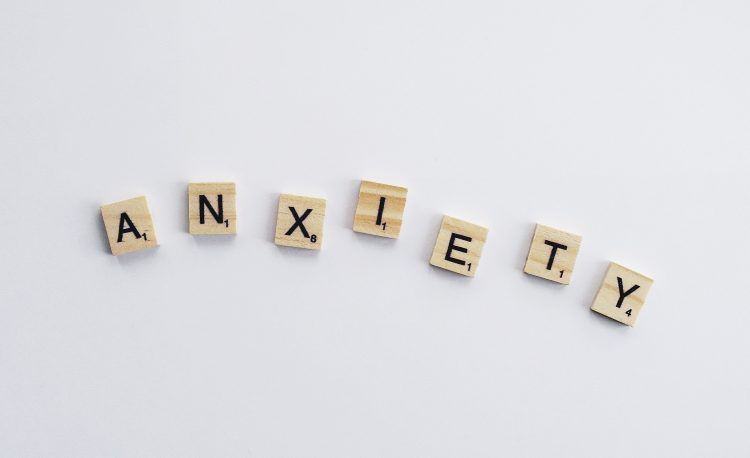TL;DR:
- Generalized anxiety disorder involves the intensity, duration, and frequency of excessive worry.
- Academic and social implications of generalized anxiety disorder can involve missing school and other events.
- Physical health and mental health are closely related.
- Exercise, managing the room, hydrating, making time for calm, and asking for professional help are ways to improve one’s lifestyle.
Imagine. It is 2019. You are flying on a plane and looking out the window. The skies are a crisp blue, the clouds are cotton ball white, and the hum of the engine nearly puts you to sleep. But the plane jolts and rocks you out of your slumber. Another jolt has you reaching for your terpene-infused products to help quell the anxiety. The bad turbulence has you wondering what is going on, why is the plane doing this, and where the flight attendants are. A short, older woman with a scarf walks calmly down the aisle. She alerts everyone to make sure they are buckled, smiles a genuine smile, and sits to buckle herself.
When students are with us, we are their flight attendants. We need to be calm and cool like those flight attendants on the plane. Now, I will not pretend that the protests and COVID-19 are not happening right now. But I will go into the classroom to make sure that those students have someone to lead them. I plan to go in and model optimism, because that is what will rebuild our community and make us resilient.
Generalized Anxiety Disorder

But what about those students that were already anxious before 2020? Or those perhaps on the borderline and this has tipped them over the edge?
I believe we all need to take just a few minutes and educate ourselves on the most prevalent mental health issue among children kindergarten through college: generalized anxiety disorder. General anxiety disorder is one of the most common psychological disorders among school-age children.
I believe we all need to take just a few minutes and educate ourselves on the most prevalent mental health issue among children kindergarten through college: generalized anxiety disorder. Share on XOfficial DSM–5 Definition
Diagnostic and Statistical Manual of Mental Disorders (DSM) defines generalized anxiety disorder as:
“The essential feature of generalized anxiety disorder is excessive anxiety and worry (apprehensive expectation) about a number of events or activities. The intensity, duration, or frequency of the anxiety and worry is out of proportion to the actual likelihood or impact of the anticipated event. The individual finds it difficult to control the worry and to keep worrisome thoughts from interfering with attention to tasks at hand. Adults with generalized anxiety disorder often worry about everyday, routine life circumstances, such as possible job responsibilities, health and finances, the health of family members, misfortune to their children, or minor matters (e.g., doing household chores or being late for appointments). Children with generalized anxiety disorder tend to worry excessively about their competence or the quality of their performance. During the course of the disorder, the focus of worry may shift from one concern to another.”
Here is a 2-3 minute video on the symptoms and strategies for generalized anxiety disorder. It uses cartoon characters and simple language to help communicate with young people.
What Does Generalized Anxiety Disorder Look Like?
All people experience worry and fear. Generalized anxiety disorder occurs when a person has an excessive amount of worry or fear in one or more ways: intensity (how much it takes over your life), duration (how long it lasts), and frequency (how often you experience it).
Symptoms may include:
- excessive worry
- being tired
- unable to sleep
- irritability
- difficulty focusing
- restlessness
- unpredictable behavior
- missing/skipping class
Again, many of us face these symptoms over our lifetime. One of the key differences is that these symptoms will cause impairment in the person’s everyday life.
Diagnosis
- Doctors may order a physical exam, and blood and urine tests to rule out any physical cause of the patient’s symptoms.
- The Penn State Worry Questionnaire is one tool psychologists may use to diagnose generalized anxiety disorder along with the criteria in the DSM-V. Primary care doctors may also use the GAD-7 screening tool.
- There are medical conditions and medications that cause anxiety which would also need to be considered.
Treatment
- The parent/guardian, child, and doctor will come up with a treatment plan together.
- Treatment may include: therapy, lifestyle changes, medication, or a mixture of these options.
Academic Implications
Students with anxiety may try to avoid school or friends at school. This avoidance can lead to poor academic achievement. Losing class time has a direct effect on academic achievement in most students and sometimes causes a snowball effect. The student is anxious and misses class, which makes them more anxious when he or she struggles with the next lesson.
On the flip side, from my own personal experience, many of my bright and/or gifted students show signs of anxiety through perfectionism. They feel like they must obtain near 100% on everything. For these students, I stress a goal of reaching excellence and not perfection.
Social-Emotional Implications and Strategies
Sometimes students with anxiety miss out on field trips and other social activities. It is easy to see the student who always succeeds as a bright student, when really he or she is struggling greatly under the pressure.
Sometimes anxiety results from under-developed social-emotional skills. “Self-regulation, negative thought stopping, perspective taking, executive functioning, and flexible thinking” are five skills that can be taught in order to help overcome the anxiety.
Career Development
Young people with anxiety can overthink and analyze to an extreme. These characteristics could be used to gear someone to a job that can utilize these qualities. These jobs include: house-building careers like a plumber or an electrician, education careers like a teacher or professor, and research careers such as medicine or science.
Physical Health and Mental Health Are Intertwined
Our diet affects not only our physical health, but our mental health as well. Some foods help balance serotonin and mood such as eggs, salmon, turkey, cheese, nuts, seeds, pineapples, and tofu.
Sleep is another major contributor to anxiety. The cycle starts if you can’t sleep; then you get anxious and irritable because you can’t sleep. There are some steps you can take at home to help your child sleep.
- Exercise. Get moving! Outside or inside, kids need to move. Fitness Blender (older kids) and Go Noodle (younger kids) have a lot of quality videos to help get them moving.
- Manage the room. No screens, little to no light (black-out curtains help), quiet and cool.
- Drink water. Stay hydrated throughout the day, and limit caffeine to before 12pm. Limit drinks 1-2 hours before bedtime if the child is waking up in the middle of the night to go to the bathroom often.
- Be calm. Headspace is a great app that has sound and stories to help fall asleep. Yoga, meditation, and writing a journal can help to create a soothing mental state before bed too.
- Ask for help from a counselor or medical doctor.
Teacher Responsibilities
How many of your students have an anxiety disorder? When I researched the numbers, there are two different answers. The CDC states that 7.1% of school-age children have been diagnosed with anxiety. However, the Child Mind Institute believes, based on interviews, that 31.9% of school age children have an anxiety disorder.
As a teacher, I want to warn teachers to NOT diagnose students. You could be teaching in one of the best private schools in houston or elsewhere with first aid facilities, but remember you are not medically trained to diagnose mental health. However, we can be aware that anxiety is one of the largest mental health problems in students today.
We can use resources to help. We can teach coping strategies to all students.
I have listed additional resources below to help students who you think may have anxiety or who have already been diagnosed with anxiety.
Resources
- Coping Strategies for Supporting Students – This 16-page document has a list of strategies with videos and clear explanations.
- List of 100 Coping Strategies – You could include this list in a Calming Corner of your house or classroom, or put each one on a Popsicle stick to choose at random.
Links for More Information
- Anxiety and Depression Association of America – Anxiety Disorder or just a phase?
- Child Mind Institute – Generalized Anxiety Disorder
- Stanford Children’s Health
References
American Psychiatric Association. (2013). Anxiety Disorders. In Diagnostic and statistical manual of mental disorders (5th ed.).
https://www.healthline.com/health/healthy-sleep/foods-that-could-boost-your-serotonin
https://childmind.org/2015-childrens-mental-health-report/
Fresco, D. M., Mennin, D. S., Heimberg, R. G., & Turk, C. L. (2003). Using the Penn State Worry Questionnaire to identify individuals with generalized anxiety disorder: a receiver operating characteristic analysis. Journal of behavior therapy and experimental psychiatry, 34(3-4), 283–291. https://doi.org/10.1016/j.jbtep.2003.09.001
https://childmind.org/downloads/2015%20Childrens%20Mental%20Health%20Report.pdf
https://www.cdc.gov/childrensmentalhealth/features/anxiety-depression-children.html#:~:text=Anxiety%20and%20depression%20affect%20many,1.9%20million)%20have%20diagnosed%20depression.
http://www.ascd.org/publications/newsletters/education-update/aug17/vol59/num08/Helping-Ease-Student-Anxiety.aspx
About Mary Ellen Riley
Hello! I am Mary Ellen, a wife, mother of two, certified K-12 teacher, and crafts and coffee lover. As a mother and teacher of gifted students, I provide practical support throughout my schools for all students who need more depth and enrichment.
Visit Mary Ellen’s Websites:



